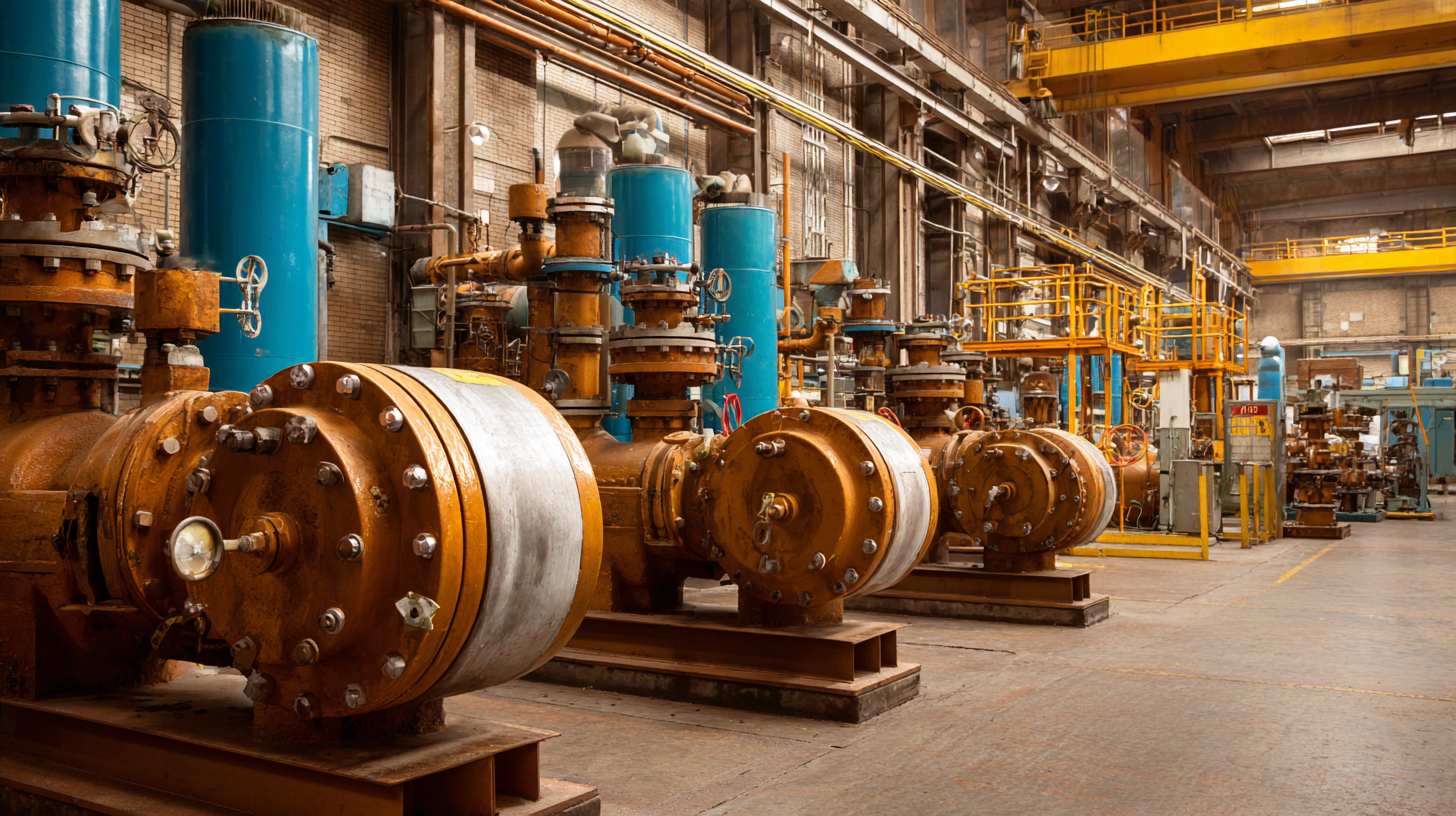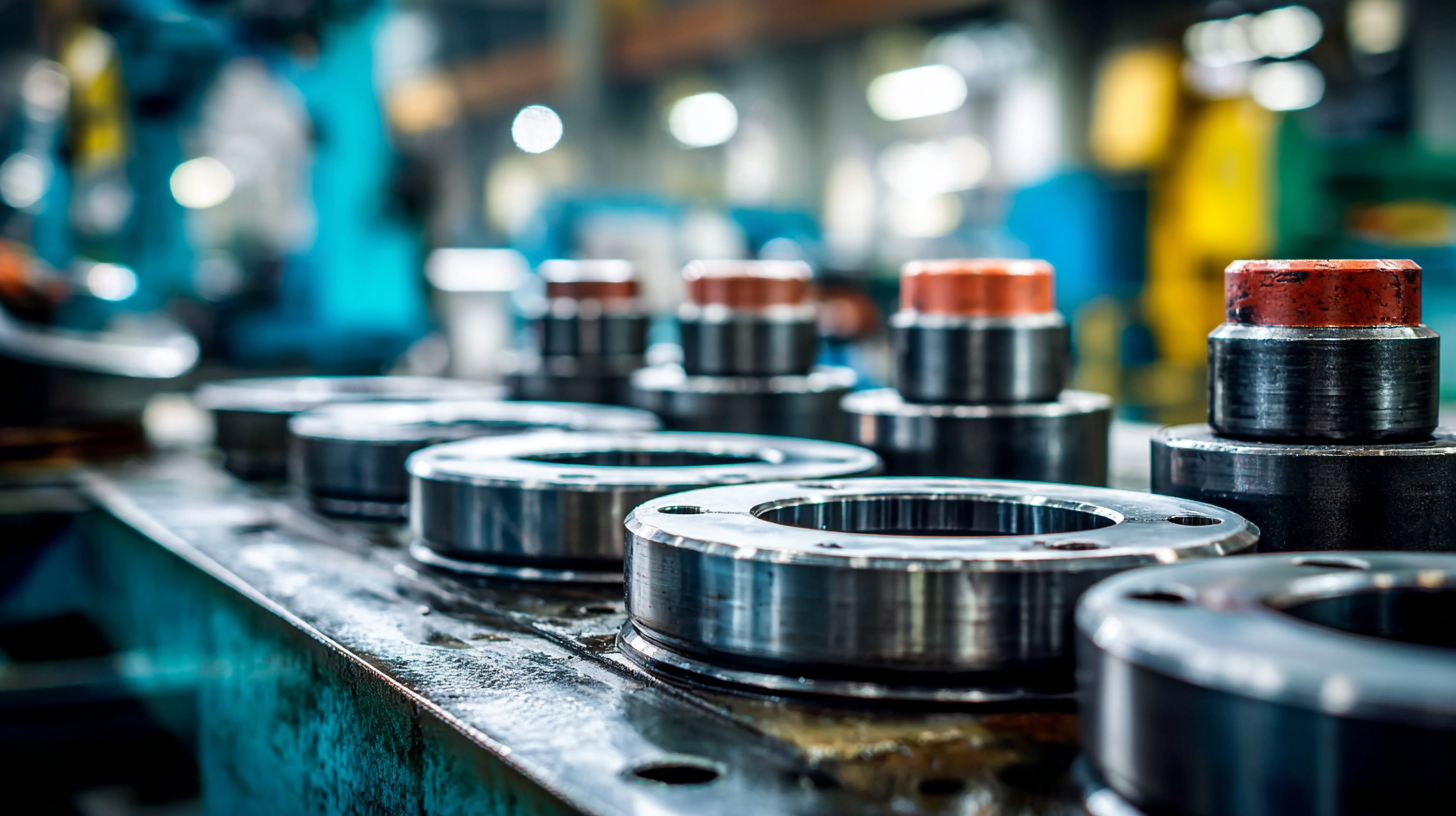In the realm of industrial efficiency, Gaskets and Seals play a pivotal role that is often underestimated. According to a report from MarketsandMarkets, the global gasket and seal market is projected to reach USD 33.1 billion by 2026, growing at a CAGR of 6.0% from 2021. This growth highlights the increasing recognition of gaskets and seals in enhancing operational performance and reliability across various industries, including automotive, aerospace, and manufacturing. As equipment becomes more complex and the demand for meticulous performance escalates, the need for high-quality gaskets and seals has never been more critical. These components not only prevent leaks and reduce friction but also contribute significantly to energy efficiency and sustainability, aligning with industry trends towards greener practices. Understanding the essential types of gaskets and seals can revolutionize how industries approach efficiency and productivity, making them indispensable in modern manufacturing and engineering sectors.

 Gasket materials play a pivotal role in enhancing industrial efficiency, particularly when precision and durability are crucial. In sectors such as energy and food packaging, the selection of appropriate materials directly influences operational performance. For example, a review of heat seal materials highlights that optimizing material selection can significantly improve sealing integrity in flexible food packaging, thus reducing leaks and spoilage. This is crucial in maintaining product quality and extending shelf life.
Gasket materials play a pivotal role in enhancing industrial efficiency, particularly when precision and durability are crucial. In sectors such as energy and food packaging, the selection of appropriate materials directly influences operational performance. For example, a review of heat seal materials highlights that optimizing material selection can significantly improve sealing integrity in flexible food packaging, thus reducing leaks and spoilage. This is crucial in maintaining product quality and extending shelf life.
Furthermore, the energy industry demands specific attributes from seals, particularly under high-temperature conditions. Labyrinth seals, known for their unparalleled heat resistance, demonstrate that the right material can withstand extreme environments, which is essential for the reliability of turbomachinery applications. According to recent studies, selecting seals that perform effectively at elevated temperatures can reduce maintenance costs and downtime significantly, showcasing a clear link between material choice and operational efficiency. Therefore, understanding the unique properties of various gasket materials is imperative for industries aiming to enhance performance and reduce long-term operational challenges.
Innovative seal designs are critical in enhancing equipment longevity and driving industrial efficiency. According to a report from the Freedonia Group, the global market for gaskets and seals is projected to reach $52 billion by 2023, reflecting a growing demand for high-performance sealing solutions. Advanced materials, such as expanded polytetrafluoroethylene (ePTFE) and silicone compounds, offer superior resistance to extreme temperatures and chemicals, significantly reducing wear and tear on machinery.
The incorporation of smart technology into seal design is another breakthrough that enhances operational efficiencies. Research from the International Journal of Engineering Sciences indicates that seals embedded with IoT sensors can provide real-time data on performance and wear levels. This capability allows for proactive maintenance, minimizing downtime and extending the lifespan of industrial equipment. In fact, predictive maintenance strategies enabled by such innovations can reduce maintenance costs by up to 40%, proving the value of investing in advanced sealing solutions for industrial applications.
| Type | Material | Application | Temperature Range (°C) | Longevity (Years) |
|---|---|---|---|---|
| Rubber Gasket | Neoprene | Pipes | -30 to 100 | 5 |
| PTFE Seal | PTFE | Hydraulic Systems | -200 to 260 | 10 |
| Silicone Gasket | Silicone Rubber | Food Processing | -50 to 250 | 8 |
| Metallic Seal | Stainless Steel | High-Pressure Systems | -30 to 600 | 15 |
| O-ring | Nitrile | Engines | -40 to 120 | 6 |
| Compression Seal | Elastomer | Pneumatic Applications | -10 to 80 | 4 |
| Graphite Gasket | Graphite | Heat Exchangers | -50 to 450 | 12 |
Gaskets and seals play a pivotal role in preventing fluid leaks in industrial applications, significantly affecting operational efficiency and safety. According to a report by the U.S. Department of Energy, leaks in industrial systems can account for up to 30% of overall energy loss, leading to billions of dollars in wasted resources annually. By effectively sealing joints and connections, gaskets contribute to minimizing these leaks, ensuring that systems operate at their optimal capacity.
Moreover, the reliability of gaskets can influence the overall performance and longevity of machinery. A study by the Fluid Sealing Association highlighted that using high-quality gaskets can reduce maintenance costs by up to 25% by decreasing the frequency of leaks and the resulting downtime. As industries continue to seek ways to enhance productivity and reduce costs, the integration of advanced gasket materials—such as graphite, PTFE, and elastomers—has become essential in achieving these goals. These materials provide superior resistance to temperature and pressure fluctuations, thereby extending the life of both the gaskets themselves and the machinery they protect.
In the realm of industrial efficiency, the integrity of gaskets and seals is paramount. Proper installation techniques are essential to ensure that these components function effectively and maintain their performance over time. For example, understanding how to apply caulking and weatherstripping can significantly enhance a facility's air sealing capabilities, leading to reduced energy costs and enhanced thermal performance. This attention to detail not only prolongs the life of the seals but also prevents costly downtime due to leaks or failures.
Moreover, it is crucial to recognize the various factors affecting seal integrity. In applications like heat-sealed flexible food packages, a meticulous approach to installation can mitigate issues such as incomplete sealing or material degradation. Delving into the mechanisms behind these seals and considering environmental factors such as temperature and humidity can dramatically improve the reliability of the sealing process. By investing time in education and hands-on training for installation practices, industries can revolutionize their operational efficiency and product reliability.

Regular maintenance of gaskets and seals is crucial for optimizing industrial efficiency and prolonging equipment lifespan. According to a report by the National Institute for Standards and Technology, poor gasket and seal maintenance can lead to a staggering 40% increase in production downtime due to leaks and equipment failures. Implementing a scheduled inspection routine allows facilities to identify wear and damage early, significantly reducing the risk of costly breakdowns.
Moreover, keeping track of environmental factors that can affect gasket performance is essential. A study from the American Society of Mechanical Engineers suggests that approximately 30% of gasket failures are attributed to exposure to extreme temperatures and corrosive chemicals. Regular maintenance practices include verifying the integrity of seals, performing material compatibility assessments, and replacing worn-out components timely. By investing in these preventive measures, industries can achieve higher operational efficiency, ultimately minimizing waste and enhancing their bottom line.
